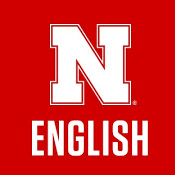English, Department of

Department of English: Faculty Publications
Document Type
Article
Date of this Version
Fall 2019
Citation
McMullen, Kevin; Stacy, Jason; and Schöberlein, Stefan. "Walt Whitman at the Aurora: A Model for Journalistic Attribution." Walt Whitman Quarterly Review 37 (2019), 107-115. https://doi.org/ 10.13008/0737-0679.2362
Abstract
Relatively little manuscript material exists to definitively tie Walt Whitman to the bulk of the journalistic writing attributed to him, particularly the writing in the early years of his career. Because the vast majority of his early journalistic work was unsigned, attribution is most often based on the knowledge of Whitman’s involvement with a given paper, coupled with the identification of some sort of Whit- manic voice or tone in a given piece of writing. However, a writer’s style and tone are often affected by the form and context in which they are writing, meaning that Whitman’s journalistic voice is often quite different than his poetic voice, which is in turn different than his prose fiction voice. Furthermore, certain similarities of style and tone are found across a given genre; many nineteenth-century newspaper editorials sound quite similar, for example, making any discussion of authorship in nineteenth-century periodicals rife with uncertainty. Therefore, even for the most knowledgeable scholars, a belief that Whitman was the author of a given piece of journalism generally rests upon a trust in the tradition of attributing a piece to Whitman, with skepticism arising only in the face of strong evidence to the contrary.
Last year, the editorial team overseeing the treatment of Whitman’s journalism for the Walt Whitman Archive decided to add an editorial note to the metadata at the top of each text file, explaining the Archive’s rationale for attributing a piece to Whitman. In the note, we lay out all of the factors—including the piece’s attribution history—that influenced our decision to present the piece as likely authored by Whitman. We also embedded, within the TEI encoding, an expression of our level of certainty in Whitman’s authorship. Finally, we noted in the metadata whether and how the piece was signed by Whitman in the original publication. These measures are an attempt to foreground for users the inherent uncertainty of authorship in nineteenth-century periodical materials. But they also offer the opportunity to begin thinking about how we might move beyond traditional methods of attribution.
Included in
Comparative Literature Commons, English Language and Literature Commons, Modern Literature Commons, Reading and Language Commons


Comments
WWQR VOL. 37 NOS. 1 & 2 (SUMMER, FALL 2019)